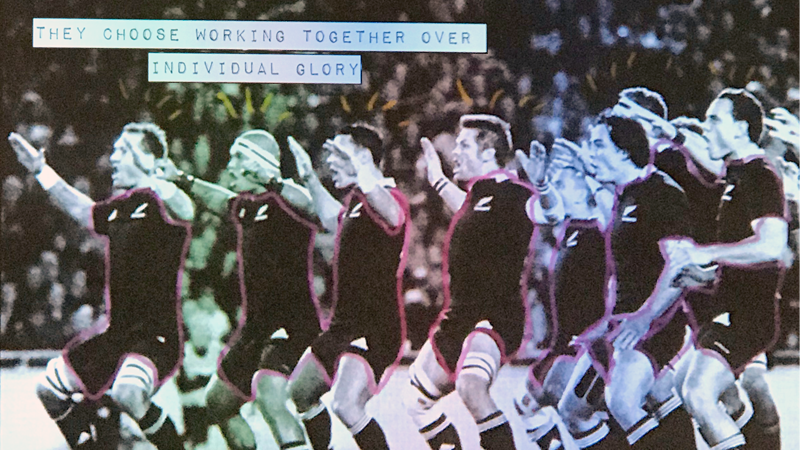Speaker: Pamela Mead (SVP Global Design @ SumUp) Rethinking design’s story Every now and then,…

How to Use AI to Become a 10x Product Team – Reflections and Takeaways
Speaker: Anthony Maggio (VP & Head of Product Management)
Every so often, a talk comes along that hits the right balance between inspiration and practicality. “How to use AI to become a 10x Product Team” is one of those. It’s not another breathless “AI will change everything” sermon, but a thoughtful look at how product and design teams can genuinely use AI to amplify what they already do well.
The premise is simple: stop thinking of AI as a gimmick or automation layer. Start thinking of it as a force multiplier — something that can take your team’s existing capabilities and scale them tenfold.
As someone who’s worked across design, product and UX leadership, I found a lot of the ideas here both exciting and grounded in reality. Below are my key takeaways — what resonated, what to watch out for, and how teams might start applying this thinking.
1. AI isn’t replacing creativity — it’s reframing it
The talk opens with a useful reminder: AI isn’t here to do our jobs for us. It’s here to change how we work.
For product teams, that means letting AI handle the labour-intensive, repetitive parts of the process — synthesising research, surfacing patterns, generating early ideas — so humans can focus on judgment, context, and creativity.
It’s a subtle but powerful shift. Instead of spending hours writing summaries or clustering feedback, you can spend that time asking better questions, designing sharper experiments, or validating with users faster.
The creative energy doesn’t disappear; it’s just redirected to where it has the most impact.
2. Data is your new design material
There’s a great line in the talk about how the quality of your AI output depends entirely on the quality of your input. Garbage in, garbage out.
If you want AI to help your product team make smarter decisions, you need to feed it with clean, relevant, and well-structured data — everything from user interviews to support tickets, NPS comments and analytics logs.
Treat data as part of your design system. Maintain it, version it, curate it. The richer the material, the better the insight.
That might sound dry, but in practice it’s liberating. A solid data foundation lets you ask more interesting questions — and get answers that actually mean something.
3. Prototyping at the speed of thought
One of the most exciting points was how AI can compress the gap between an idea and something testable.
With the right tools, teams can now generate wireframes, interface copy or even working prototypes in minutes. That means you can validate assumptions faster — and kill weak ideas earlier.
It’s not about skipping the design process, but about speeding up the feedback loop. You still need designers and product thinkers to decide what’s worth building, but AI helps you explore the options faster and more cheaply.
Think of it as “Wizard of Oz” prototyping on steroids.
4. AI doesn’t remove the need for rigor
It’s tempting to see AI as a shortcut — a way to automate the messy bits of product discovery. The talk makes it clear that this is a mistake.
AI outputs still need to be reviewed, challenged and validated by humans. Biases don’t disappear just because the tool looks clever. In fact, if your source data is skewed, AI can quietly amplify those blind spots.
The best teams will build in review cycles, guardrails and clear accountability for any AI-generated insight or design. The goal isn’t blind trust — it’s accelerated learning with proper oversight.
5. Culture eats AI for breakfast
Perhaps the most important takeaway wasn’t about the technology at all. It was about people.
Introducing AI into a product team is a cultural change. It requires curiosity, openness, and a willingness to experiment. Some team members will embrace it instantly; others will be cautious or sceptical.
That’s normal. The key is to start small — run a pilot, share wins, show where AI saved time or revealed something new. Build trust incrementally.
A “10x product team” isn’t one that uses more tools — it’s one that learns faster together.
What I’d love to see next
The talk covers a lot of ground, and I’d love to see future versions go deeper into specific case studies: real teams, real numbers, before-and-after results.
It also skims over some of the harder operational questions — data privacy, integration, governance — that make or break adoption in larger organisations. But those are solvable, and the overall direction is absolutely right.
For most design and product leaders, the real challenge now isn’t whether to use AI, but how to do it well.
Final thought
AI won’t make bad teams good. But it can make good teams exceptional.
The trick is to treat it not as a new gadget, but as an extension of your collective intelligence — something that lets you spend less time processing and more time thinking.
If that’s what becoming a “10x product team” means, I’m all for it.

